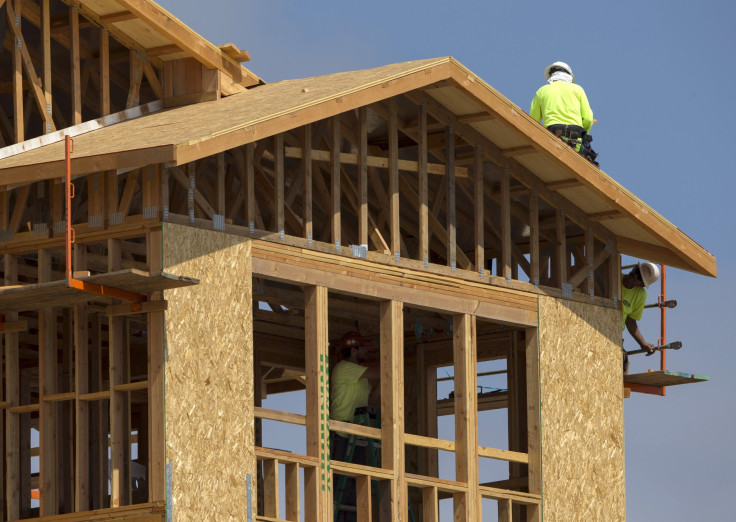US New-Home Sales Near 1-Year Low; Drop Seen As Temporary

By Lucia Mutikani
WASHINGTON (Reuters) -- New U.S. single-family home sales fell to near a one-year low in September after two straight months of gains, but a jump in prices suggested that housing remained on solid ground.
The Commerce Department said on Monday sales dropped 11.5percent to a seasonally adjusted annual rate of 468,000 units, the lowest level since November 2014. August's sales pace was revised down to 529,000 units from the previously reported 552,000 units.
The moderation in new home sales is at odds with other housing reports that have painted a bullish picture of the sector. New home sales, which account for 7.8 percent of the housing market, tend to be volatile on a month-to-month basis because they are drawn from a small sample.
"The September report does little to alter our view that the housing market is continuing to recover. We view the new home sales data as unreliable and many other more reliable housing indicators have been sending upbeat signals lately," said Daniel Silver, an economist at JPMorgan.
September data on existing home sales, homebuilder confidence and housing starts have been fairly strong.
The housing index fell more than 1 percent on the data, underperforming a marginally weaker stock market. D.R. Horton Inc, the largest U.S. homebuilder, dropped 2.7 percent. Lennar Corp, the nation's second-largest homebuilder, fell 2.1 percent.
Prices for U.S. government debt rose, while the dollar slipped against a basket of currencies.
HOUSING SUPPORTING ECONOMY
A sturdy housing market is supporting consumer spending through an increase in household wealth, which is helping to soften the blow on the economy from faltering global growth, a strong dollar and weak capital spending in the energy sector.
Efforts by businesses to reduce an inventory bloat also have weighed on growth, leaving gross domestic product growth estimates for the third quarter running below a 2.0 percent annualized rate.
The economy grew at a 3.9 percent rate in the second quarter. The government will publish its advance third-quarter GDP estimate on Thursday.
Economists had forecast new home sales slipping to only a rate of 550,000 units. Sales were up 2.0 percent compared to September of last year.
New home sales tumbled 61.8 percent in the Northeast to the lowest level since April. Sales declined 6.7 percent in the West and were down 8.7 percent in the populous South. In the Midwest, sales fell 8.3 percent.
With sales weak, the stock of new houses for sale increased 4.2 percent to 225,000 last month, the highest level since March 2010. Still, supply remains less than half of what it was at the height of the housing boom. At September's sales pace it would take 5.8 months to clear the supply of houses on the market, the highest since July 2014. That was up from 4.9 months in August.
The median price of a new home rose 13.5 percent from a year ago to a nine-month high of $296,900.
"The strong price gains suggest either that the mix of houses shifted to more expensive houses or that homebuilders are pushing up prices," said John Ryding, chief economist at RDQ Economics in New York. "Weakening demand would be accompanied by slowing price gains or price declines."
(Reporting by Lucia Mutikani; Editing by Paul Simao)
© Copyright Thomson Reuters {{Year}}. All rights reserved.




















